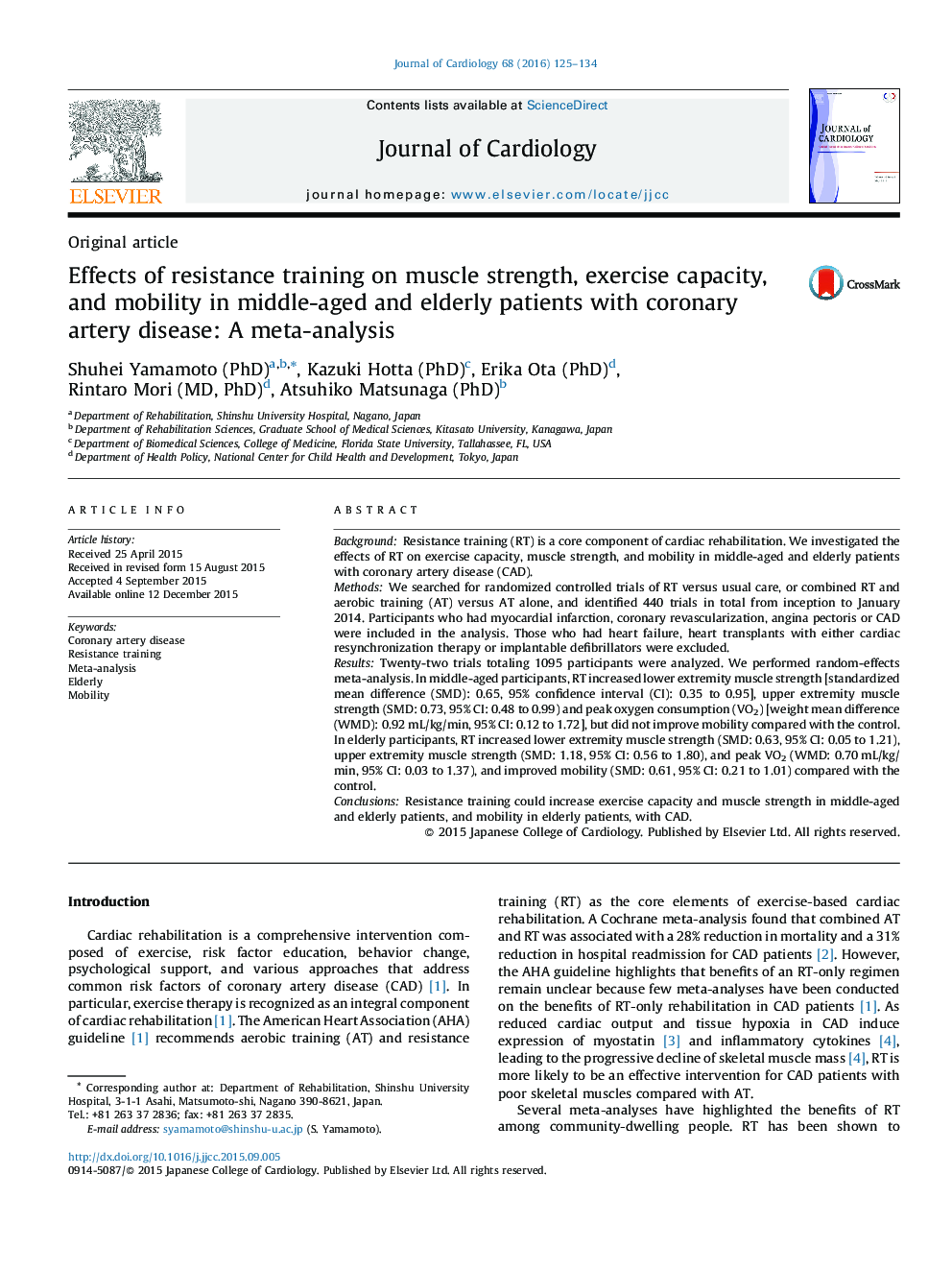| Article ID | Journal | Published Year | Pages | File Type |
|---|---|---|---|---|
| 2962704 | Journal of Cardiology | 2016 | 10 Pages |
BackgroundResistance training (RT) is a core component of cardiac rehabilitation. We investigated the effects of RT on exercise capacity, muscle strength, and mobility in middle-aged and elderly patients with coronary artery disease (CAD).MethodsWe searched for randomized controlled trials of RT versus usual care, or combined RT and aerobic training (AT) versus AT alone, and identified 440 trials in total from inception to January 2014. Participants who had myocardial infarction, coronary revascularization, angina pectoris or CAD were included in the analysis. Those who had heart failure, heart transplants with either cardiac resynchronization therapy or implantable defibrillators were excluded.ResultsTwenty-two trials totaling 1095 participants were analyzed. We performed random-effects meta-analysis. In middle-aged participants, RT increased lower extremity muscle strength [standardized mean difference (SMD): 0.65, 95% confidence interval (CI): 0.35 to 0.95], upper extremity muscle strength (SMD: 0.73, 95% CI: 0.48 to 0.99) and peak oxygen consumption (VO2) [weight mean difference (WMD): 0.92 mL/kg/min, 95% CI: 0.12 to 1.72], but did not improve mobility compared with the control. In elderly participants, RT increased lower extremity muscle strength (SMD: 0.63, 95% CI: 0.05 to 1.21), upper extremity muscle strength (SMD: 1.18, 95% CI: 0.56 to 1.80), and peak VO2 (WMD: 0.70 mL/kg/min, 95% CI: 0.03 to 1.37), and improved mobility (SMD: 0.61, 95% CI: 0.21 to 1.01) compared with the control.ConclusionsResistance training could increase exercise capacity and muscle strength in middle-aged and elderly patients, and mobility in elderly patients, with CAD.
